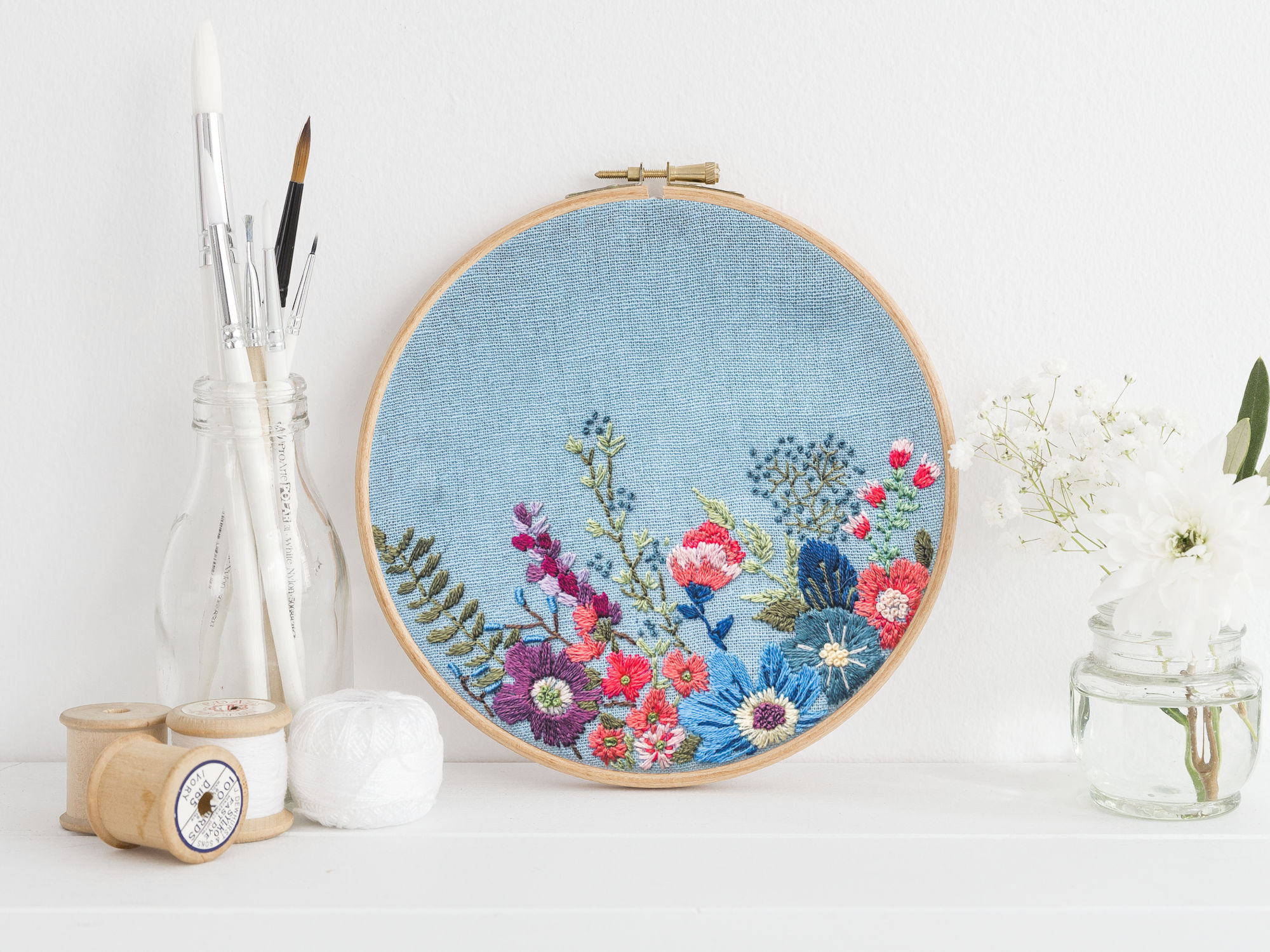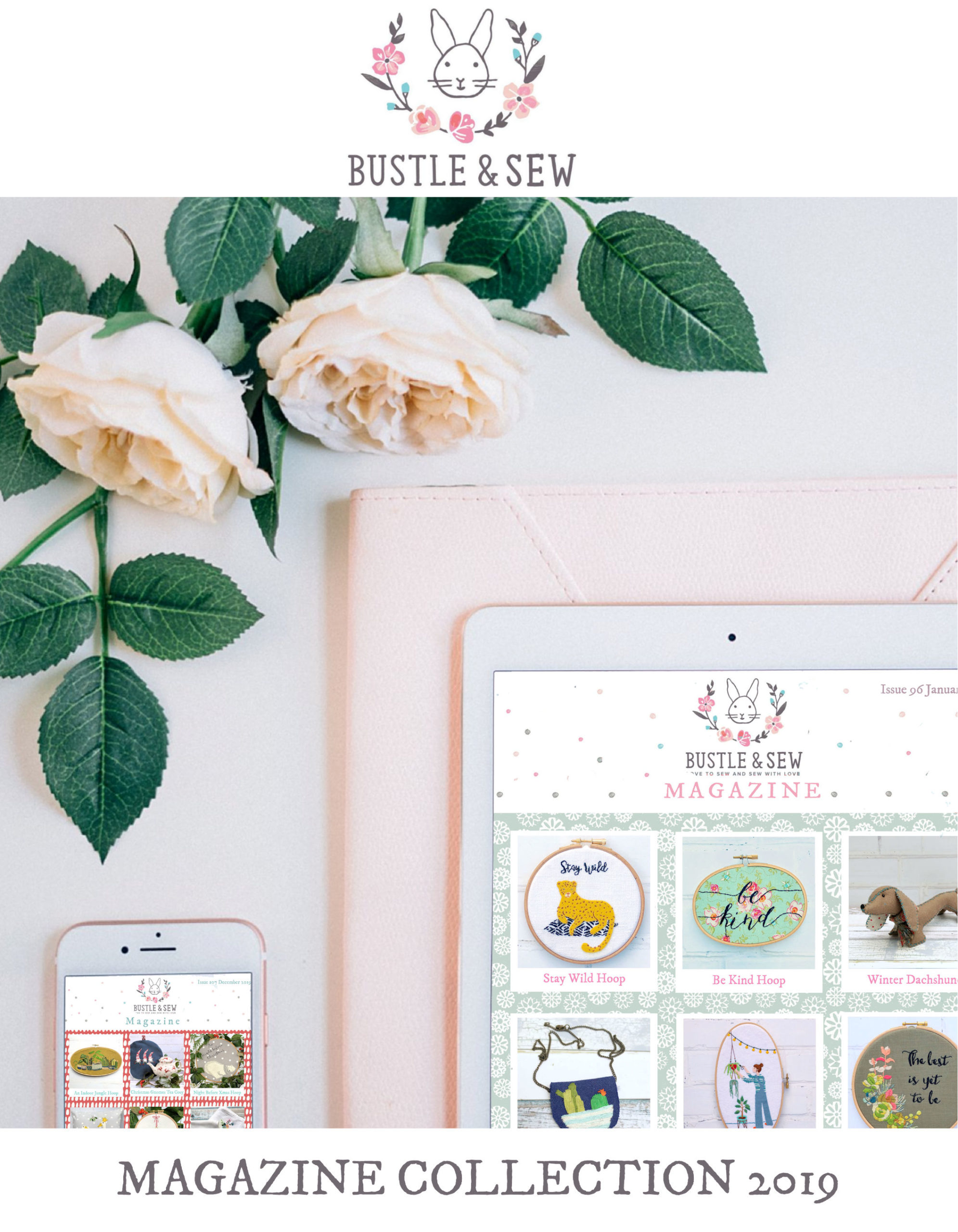Over the next few weeks I thought it would be fun to share some articles from back issues of the Bustle & Sew Magazine beginning with this extract from the January 2019 edition. I remember as a young stitcher becoming rather discouraged when my work was less than perfect (it still is!), and how my grandma encouraged me to keep going – and hope this article will help some of those feeling the same way…

If you’ve been stitching for a while, you’ve almost certainly succumbed to the temptations of Instagram and Pinterest, scrolling through the work of some very talented needlework artists who produce simply wonderful pieces that leave you (and me too!) in awe and wondering how on earth they ever produce such beautifully stitched complex designs. Then it’s hard not to listen to that small internal voice saying “they’re just so much better than me” or “I’ll never be able to stitch like that.” The danger of this kind of thinking is that you’ll become so insecure or intimidated by others’ skills that you’ll stop enjoying embroidery believing that you lack the talent to produce work that’s even half-way as good.
It’s worth stopping for a moment though to consider, what exactly is talent? I guess that we would normally describe someone possessing a particular talent as having a natural ability, an aptitude for, or leaning towards, some particular skill which means that person can easily master that particular activity. And yes, it’s definitely an advantage to possess natural talent for something, but it’s not a guarantee of success – but simply a starting point.
I think we’re often in danger of confusing talent with expertise. Talent is definitely a bonus, but real skill and expertise comes with three P’s – Practice, Perseverance and Patience.

Those wonderful pieces that leave you in awe weren’t produced by beginner stitchers on their first attempt. No, those needlework artists had to practice, practice and practice – hours of stitching sessions and innumerable failures and unpicking of stitches would have gone on before they were able to complete those beautiful pieces. Without dedication and practice a natural talent is worth very little as it isn’t being developed properly. Conversely, even if you don’t have any natural abilities, if you are keen and enthusiastic and keep practising you will certainly develop and improve your needlework skills. Be patient with yourself, take time and understand that you need to grow, and in time you will be able to achieve the results you dream of.
Also, it’s worth remembering that there is really no such thing as perfection. Any errors and imperfections in your work will always be blindingly obvious to you, though in many cases others will never notice them. Yet when you look at others’ work, you may often think that they are indeed perfect – but true perfection doesn’t exist – you simply don’t see the errors.

I don’t mean that you shouldn’t look at your work with a critical eye however, as if something is really wrong, and you are completely dissatisfied with the result, then it’s always best to unpick and rework that spot. Trust yourself. It’s much better to redo a particular area than to feel out of sorts every time you look at your work. Like any craft, hand embroidery is a constant learning process, and you’ll improve your skills over time whether you begin with a natural talent or not. If you are satisfied with your work then that’s the really important thing.
And finally, this may sound counter-intuitive, but learn to welcome your mistakes. Nothing is a better learning experience than making a mistake for yourself. Take the time to think about what went wrong, where you made your mistakes and try to learn from them.
Do try to remember all of this next time you come across an amazing piece of needlework and don’t let that inner voice stop you from enjoying your creative journey. Instead of thinking “I could never achieve results like that” instead take a good look at the piece and try to think what appeals to you most about it, whether it’s the subject, colour choices or stitches used. Then try to incorporate some of those design elements into your next project – and next step on your stitching journey.
I hope you’ve enjoyed this article from the January 2019 Bustle & Sew Magazine – you can find this issue and the rest of 2019 as well in our latest bundle….

All twelve issues from 2019 wrapped up in one super-value bundle! Just CLICK HERE to visit the store and learn more.
Leave a Reply